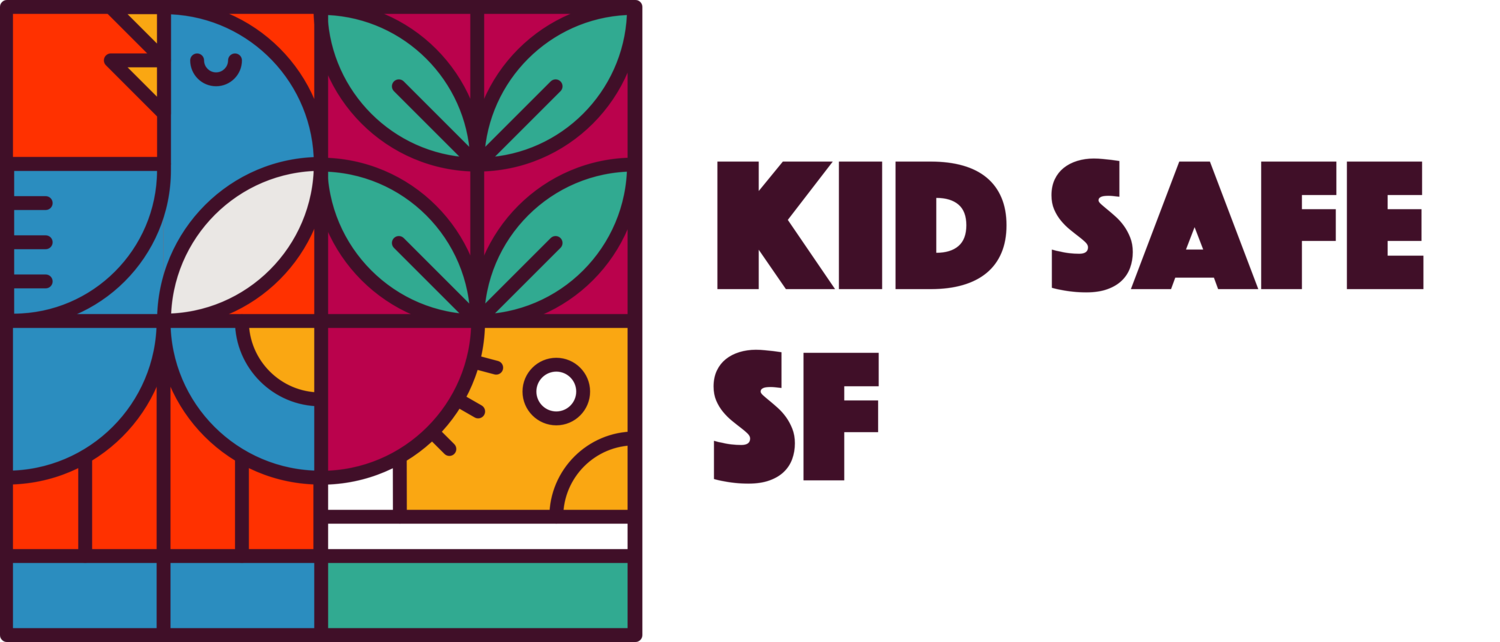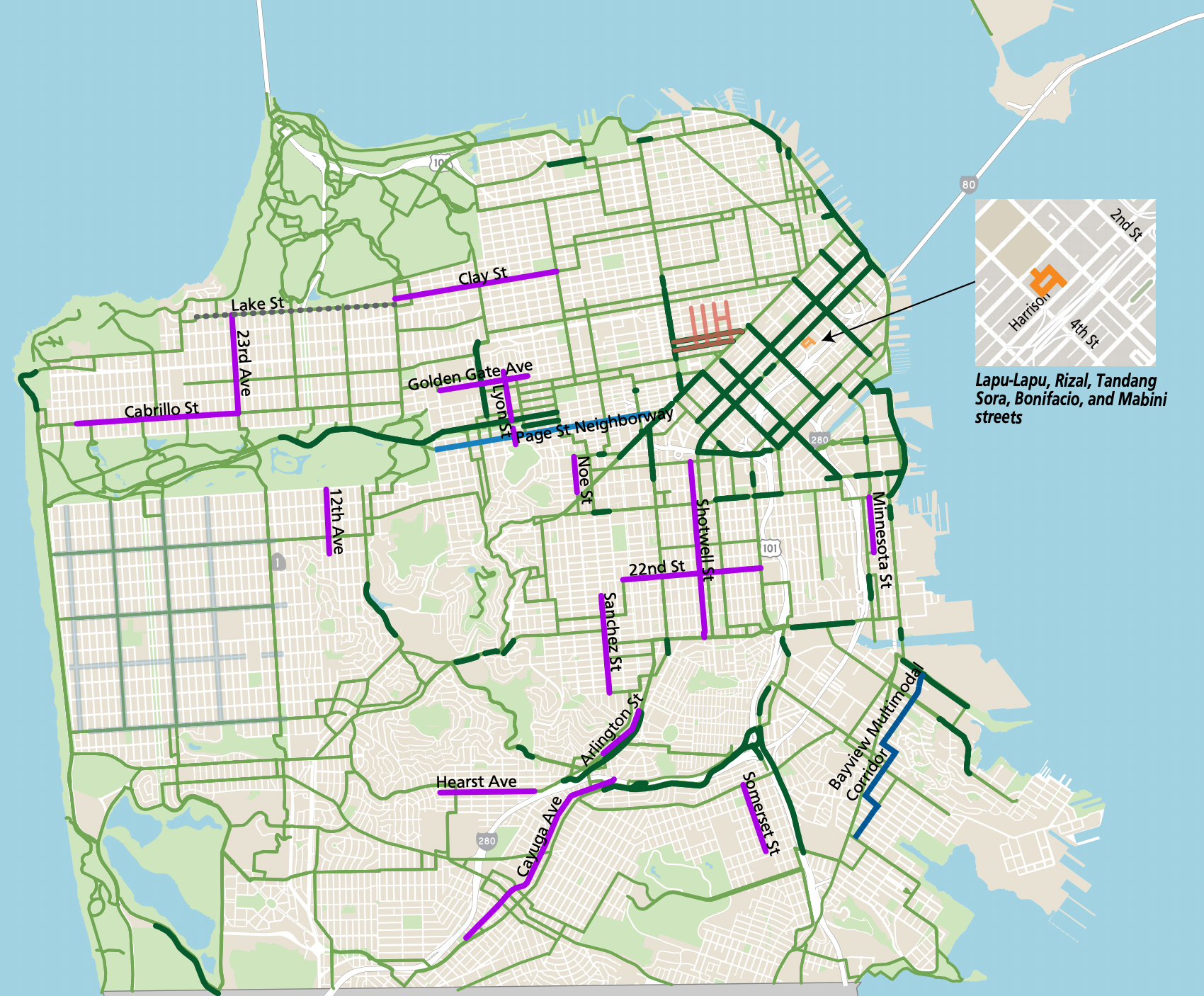We ❤️ Slow Streets, and You Can Help Save Them!
The Short Story
SFMTA’s proposed permanent Slow Streets Program, which the SFMTA board will vote to approve on December 6, is a good first step towards creating a network of safe streets.
All the existing Slow Streets — Slow Lake, Slow Chenery, Pacific, SoMA Slow Streets — should be approved.
An 85th percentile speed of 20 mph is too high for a Slow Street – it should be 15 mph. SFMTA should also be required to report quarterly on Slow Streets outcomes against their proposed metrics.
We’d like the bold vision in the People’s Slow Streets Plan to be reflected in the Slow Streets Program, and will continue to advocate until that happens! This means a pathway for new Slow Streets must be made official.
Slow Streets were one of the very best things to emerge from the pandemic. Streets where people can still drive their cars, but they prioritize safe travel for people and kids on bikes, scooters, unicycles, wheelchairs, skates and skateboards? That’s a no brainer. Give us many more! Right now! Thus we were delighted to hear that SFMTA would recommend not only continuing, but building on the pandemic Slow Streets Program. Here are our hot takes on the proposed Program.
It’s not yet a network
The staff report that describes the proposed Slow Streets Program includes a recommended “network” of Slow Streets. But the proposed 15 corridors do not make a network. If you squint, the Slow Streets and the Protected Bikeways combined start to form the outlines of a network of safe streets. But there are some pretty obvious gaps in North Beach, Russian Hill, Pac Heights, the Sunset, the Excelsior, Portola and the Bayview, just to name a few.
Several Slow Streets with strong community support were not included in the proposed batch of streets. There is no good reason why Lake Street, Chenery Street, and 20th Street should not remain Slow Streets. All provide vital connections between the existing Bike Network and popular places, like Glen Canyon Park, that many kids and families use on a daily basis.
KidSafe SF wants to build a connected network of Slow Streets and Promenades that would provide easy access to schools, parks, commercial corridors and all the other amenities of daily life, and there's a way to build it! The People’s Slow Streets Plan calls for a 100-mile network of streets that feel safe for anyone ages 8 to 80. That’s the kind of ambition we really want to see reflected in this Slow Streets Program.
The Streets Must Be Slow
To its credit, SFMTA is proposing to monitor the vehicle volume and speed of the permanent Slow Streets and adjust the street treatments accordingly to meet those targets. That’s great! Metrics-driven outcomes are critical for holding SFMTA accountable to achieving a network of truly safe streets in the city. But most of the existing Slow Street corridors already meet proposed targets according to 2021 data [link to Eval report]. Does that mean that these permanent Slow Streets won’t get any improvements? SFMTA has proposed a diverse toolkit of treatments for meeting these goals, but as we can see on current slow streets, the existing treatments are applied inconsistently and inadequately across the network, leading to confusion among road users.
The current Slow Streets are not perfect. Many residents who live on Slow Streets — like me! — report reckless speeding by people in cars daily. One person speeding recklessly can ruin a Slow Street for everyone. In the proposal, SFMTA recommends that if 85% of drivers go 20 mph or slower, then the street will be sufficiently “slow.” However, NACTO suggests that 20 mph is a more reasonable 95th percentile speed than 85th percentile speed for a truly slow street.
Another way to slow the street is to decrease the target 85th percentile speed. The People’s Slow Streets Plan calls for an 85th percentile speed target of 15 mph, which we believe would also be an effective approach.
For this metrics-based approach to work, SFMTA staff needs to regularly track how these streets are performing with respect to the metrics. To ensure accountability, SFMTA staff should present or publish the evaluation findings quarterly.
And what about GPS restrictions? The Staff Report is silent about whether GPS and Navigation apps will continue to direct people in cars away from Slow Streets. We hope those restrictions remain!
Expanding the network
Slow Streets are special because neighborhoods have adopted them and made them their own. Early on in the pandemic Slow Streets program, neighbors were able to nominate their streets to be considered for the Slow Streets treatment. Let’s bring that back and allow neighborhoods to nominate new Slow Streets. SFMTA should have a clearly defined process for neighborhoods to nominate new Slow Streets to be added to the network and considered for design improvements.
The Bottom Line
Overall, we’re optimistic about the long-term future of Slow Streets in San Francisco. The staff proposal provides a strong foundation to build on, and the People’s Slow Streets provides a compelling vision for the future of a connected, equitable network.
The SFMTA board meets on Tuesday December 6 at 3pm to vote on the staff proposal for the permanent slow streets program. Show up in person for public comment at City Hall, submit a written public comment by 5pm Monday, or call in live.
This post was authored by KidSafe SF volunteer organizer Sara Barz.

